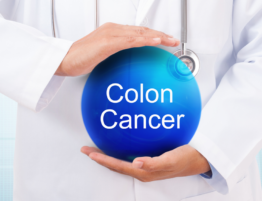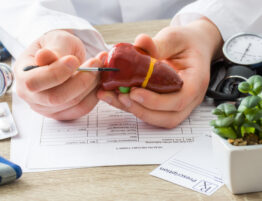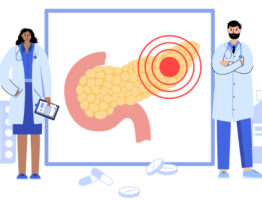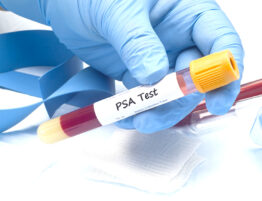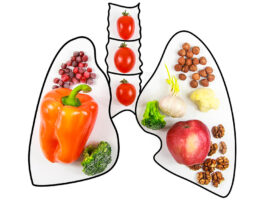
Breast cancer is a cancer that occurs when abnormal cells form in the tissues of the breast, which usually form a mass (tumour).
1 in 8 women will be diagnosed with breast cancer during her lifetime. Breast cancer is the second most common cause of cancer death in women.
The American Cancer Society’s estimates for breast cancer in the United States for 2020 are:
- About 276,480 new cases of invasive breast cancer will be diagnosed in women.
- About 48,530 new cases of carcinoma in situ (CIS) will be diagnosed (CIS is non-invasive and is the earliest form of breast cancer).
- About 42,170 women will die from breast cancer.
- Rarely, men can get breast cancer too. An estimated 2,620 men will be diagnosed with breast cancer in the United States in 2020.
Types of breast cancer:
The more common types of breast cancer are:
- Ductal carcinoma in situ (DCIS): a type of breast cancer that starts in the milk ducts and has not spread to nearby breast tissues. This type of breast cancer is non-invasive but it can become invasive if left untreated.
- Invasive (or Infiltrating) ductal carcinoma (IDC): the most common type of breast cancer that starts in the milk ducts and spreads to nearby breast tissues.
- Invasive lobular carcinoma (ILC): a type of invasive breast cancer that starts in the breast lobules (milk glands).
- Triple-negative breast cancer (TNBC): a type of invasive breast cancer that have tested negative for hormone epidermal growth factor receptor 2 (HER-2), estrogen receptors (ER), and progesterone receptors (PR).
- Inflammatory breast cancer (IBC): a more aggressive and fast-growing type of invasive breast cancer that spreads to the skin and lymph vessels of the breast.
- Metastatic breast cancer (MBC): invasive breast cancer that spreads to other parts of the body, commonly to the lungs, liver, bones or brain.
What are the risk factors of breast cancer?
Genetic factors
- Gender: Women are 100 times more likely to develop breast cancer than men.
- Age: The risk for developing breast cancer increases with age.
- Race: Caucasian women are more likely to develop breast cancer than women of other races.
- Family history: Women with family history of breast or ovarian cancer are more likely to develop breast cancer.
- Personal history: Women who are previously diagnosed with breast cancer are more likely to develop breast cancer again. Women with non-cancerous breast diseases, such as atypical hyperplasia or lobular carcinoma in situ, are also more likely to develop breast cancer.
- Reproductive history: Early menstruation (before age of 12) and late menopause (after age of 55) increases the risk of developing breast cancer due to longer exposure to hormones.
- Genetic mutations: Women with inherited genetic changes (mutations) in certain genes, such as BRCA1 and BRCA2, are more likely to develop breast cancer.
- Having dense breasts: Women with dense breasts are more likely to develop breast cancer.
Environmental factors
- Lack of physical activity: Women with sedentary lifestyle are more likely to develop breast cancer.
- Being overweight or obese: Postmenopausal women who are overweight or obese have higher risk develop breast cancer.
- Alcohol consumption: Women who frequently drinks alcohol have higher risk for developing breast cancer.
- Radiation to the chest: Having radiation therapy to the chest or breasts before the age of 30 can increase your risk for breast cancer.
- Taking Hormones: Taking combined hormone replacement therapy, as prescribed for menopause, for over five years can increase the risk of developing breast cancer.
Signs and symptoms of breast cancer:
- New lump, thickening or swelling in the breast
- Changes of the breast (i.e. in size, shape or appearance)
- Changes to the skin over the breast or nipple (i.e. redness, pitting, peeling, scaling, crusting or flaking)
- Breast pain
- Nipple retraction or pain in the nipple area
- Nipple discharge, excluding breast milk (i.e. blood)
- Swollen lymph nodes
How to detect and diagnose breast cancer?
- Screening tests
- Breast ultrasound
- Breast MRI
- Breast biopsy
- Other imaging tests, such as CT scan, PET scan and bone scan, can be used to find out if breast cancer has metastasized (spread) to other areas of the body
Treatment of breast cancer:
After diagnosis, your doctor will establish the stage of your disease. According to your current health status, history, and staging results, your doctor will discuss with you your treatment options. Regular follow-ups with your doctor and periodical monitoring with tests and investigations are highly recommended.
Treatment options include:
- Surgery: local treatment by removing the tumour. The two main types of surgery for breast cancer are the following:
-
- Breast-conserving surgery: (also known as a lumpectomy, quadrantectomy, partial mastectomy, or segmental mastectomy) is done by removing only the part of the breast with the tumour and some surrounding tissues
- Mastectomy: is done by removing the entire breast and occasionally nearby tissues.
- Radiotherapy: using high-powered energy beams to kill cancer cells. It can be used alone or in combination with chemotherapy. The two main types of radiotherapy used to treat breast cancer are:
- External beam radiation (EBRT)
- Brachytherapy
- Chemotherapy: using certain drugs to kill cancer cells systemically, which can be taken either intravenously or orally. Chemotherapy drugs for used for breast cancer treatment can be given before surgery (neoadjuvant) or after surgery (adjuvant)
- Targeted Therapy: using certain drugs to target specific abnormalities present within cancer cells.
- Hormonal Therapy: using drugs to lower hormones, such as estrogen and progesterone, or preventing them from attaching to breast cancer cells receptors
- Immunotherapy: using immune cells or certain drugs which alert the immune cells to kill cancer cells.
- Alternative treatments: using other scientific based alternatives to attack cancer cells.
How to prevent breast cancer?
You can reduce your risk of breast cancer by doing the following:
- Breast cancer screening
- Breast self-examination
- Limit alcohol consumption
- Opt for a healthy diet
- Regular exercise
- Maintain a healthy weight
- Limit postmenopausal hormone therapy
References:


